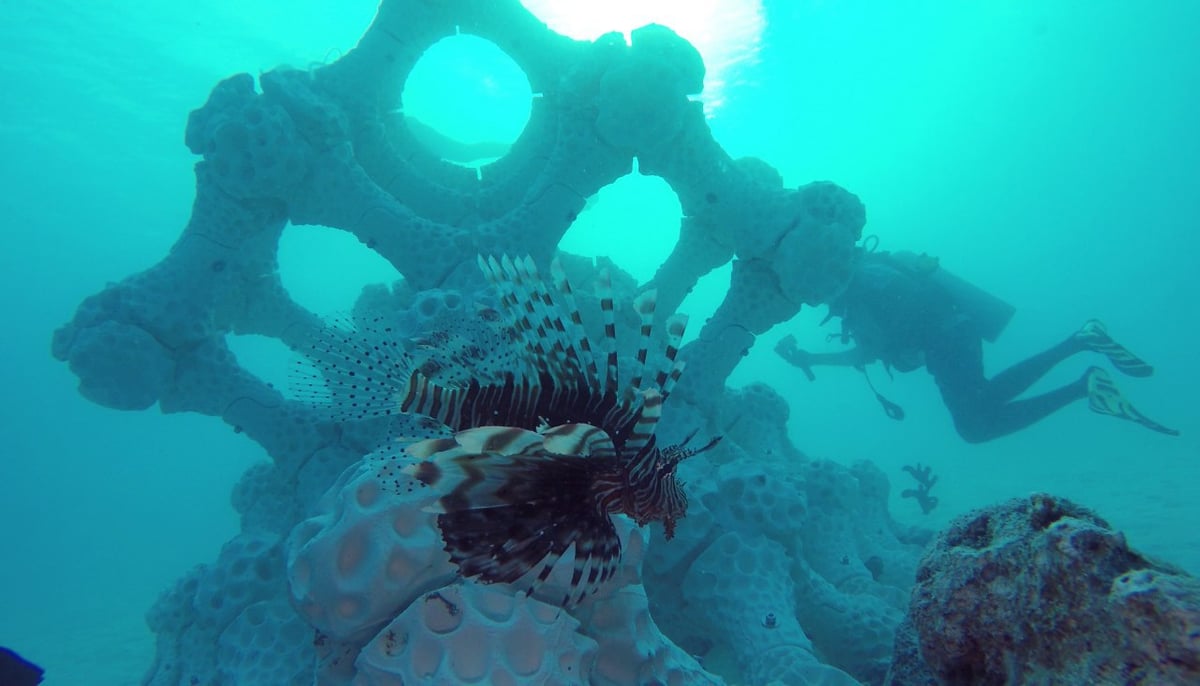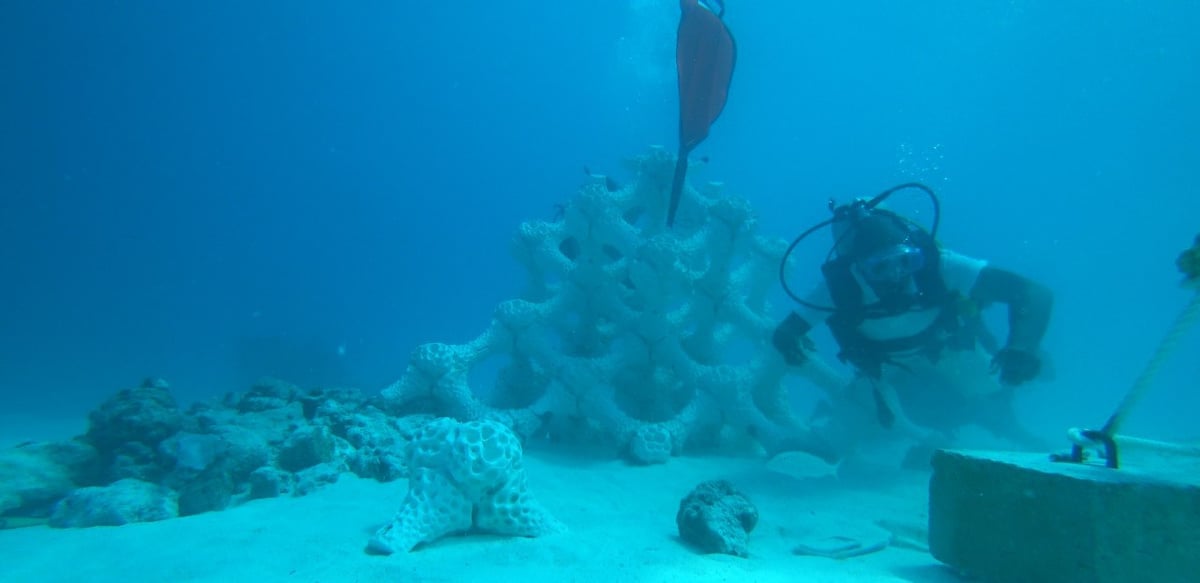Coral reefs are being threatened by climate change, which is causing coral bleaching at an alarmingly high rate. This poses innumerable problems for these underwater ecosystems, but countries are turning to 3D printing to help try and save these critical habitats. For example, researchers in Australia and the Caribbean have used 3D printed replicas to replace damaged coral.
The latest case involving the use of 3D printing to save coral is taking place in the Maldives, a tropical nation that is comprised of more than 1,000 coral islands. Last weekend, as a part of an initiative to build a new coral reef ecosystem, the world’s largest 3D printed reef was installed by the Summer Island Maldives resort.
The project started in Australia with Reef Design Lab‘s industrial designer Alex Goad, who used computer modeling to build a reef that resembled those found in the Maldives region. The 3D printing process took 24 hours to complete, and the resulting molds were cast in ceramic, which provides similarities to limestone rock. They were then shipped from Australia to the Maldives.

Creating a Lively Underwater Ecosystem by 3D Printing Artificial Coral Reef
Once the 3D printed coral reached the Summer Island Maldives resort beach, the modules were filled with marine concrete. Finally, they were assembled and submerged seven meters deep. The coral is now underwater and has become an integral part of the lagoon where the new coral reef ecosystem will be assembled.
“This is a science project, it’s a research project. 3D printing technology helps us to mimic the complexity of natural reef structures, so we can design artificial reefs that closely resemble those found in nature,” said Goad.
In total, there were 220 ceramic molds filled with concrete which could all easily fit together to create a much large new reef. Although similar in shape, the ceramic and concrete modules don’t look much like the surrounding coral due to its white color. However, the idea isn’t to replicate the natural aesthetic of the coral reef, but rather to encourage growth and give marine life somewhere to live.
To accomplish this, fragments of real coral were taken from the resort’s nursery and transplanted onto the 3D printed reef. The team hopes that these corals will soon colonize the ceramic molds. Goad’s modular 3D designs are open source, encouraging other researchers to utilize them without having to pay a licensing fee.
Marine biologists will be working with the resort over the coming years to study the 3D printed reef and its benefits. There are other ways in which the resort is promoting a more environmentally conscious mindset, including a ban on plastic straws, leveraging solar energy and not using imported drinking water.

Source: Maldives Independent
License: The text of "3D Printing Supports Growth of Coral Reef Ecosystem in the Maldives" by All3DP is licensed under a Creative Commons Attribution 4.0 International License.